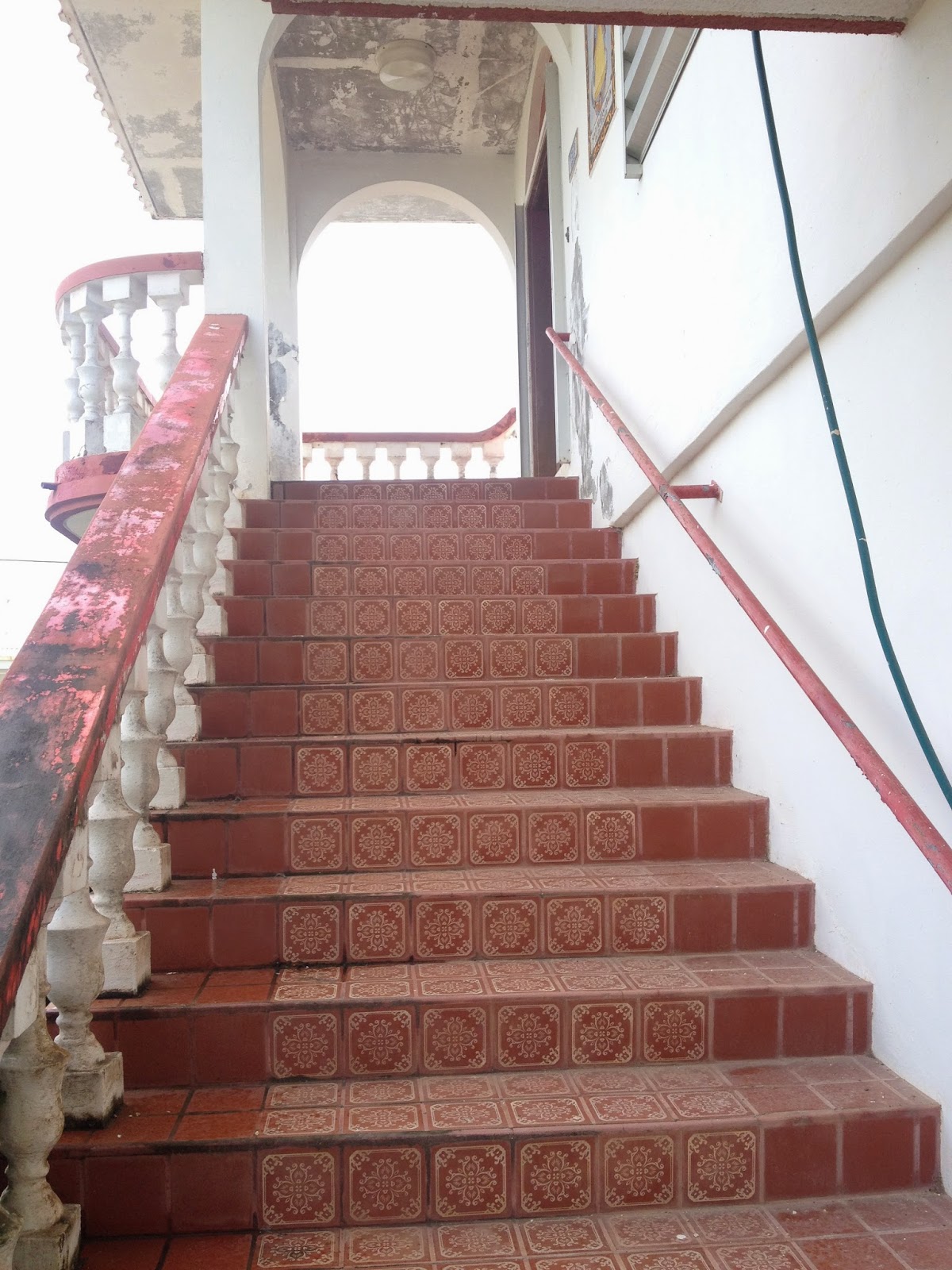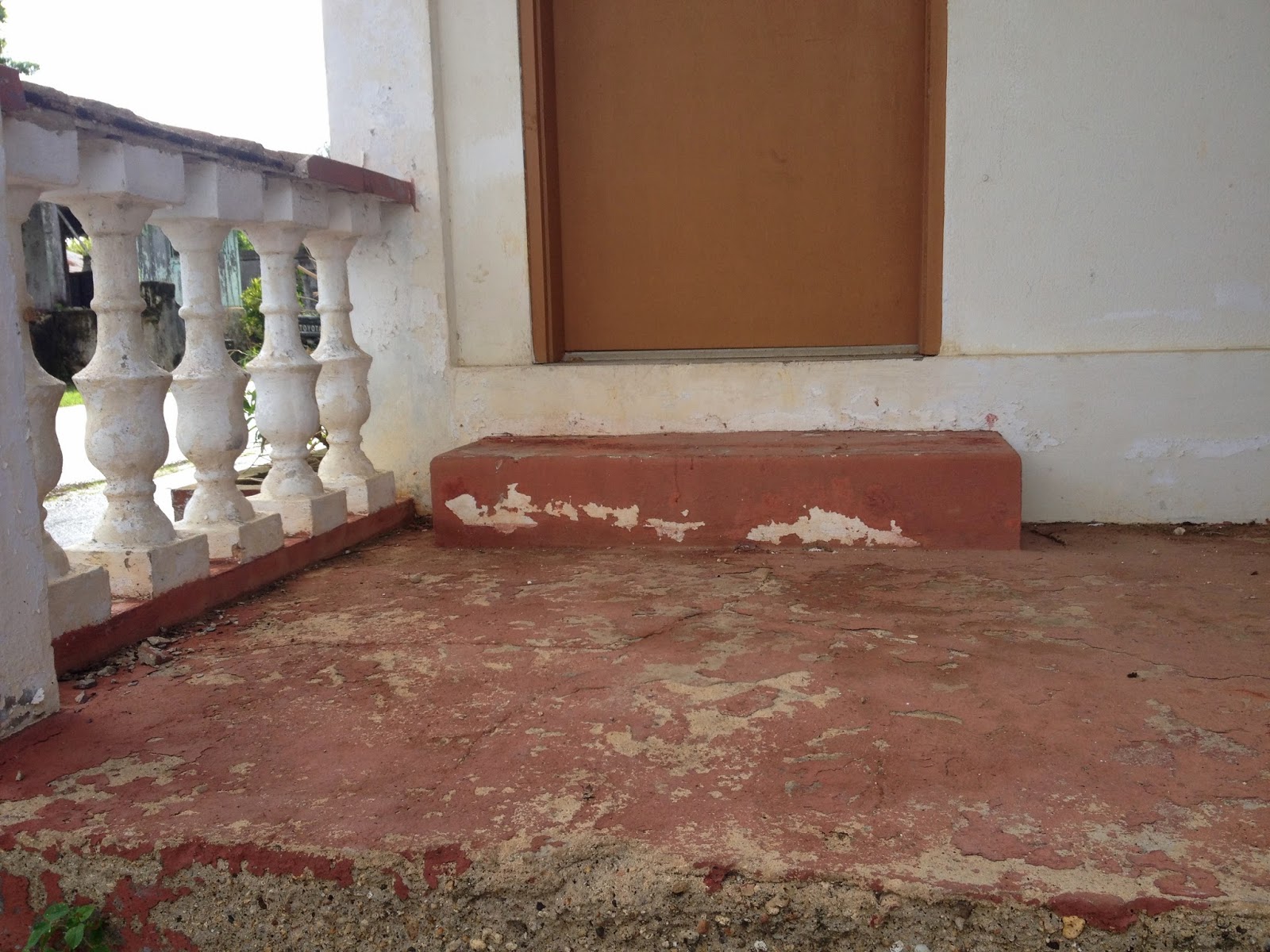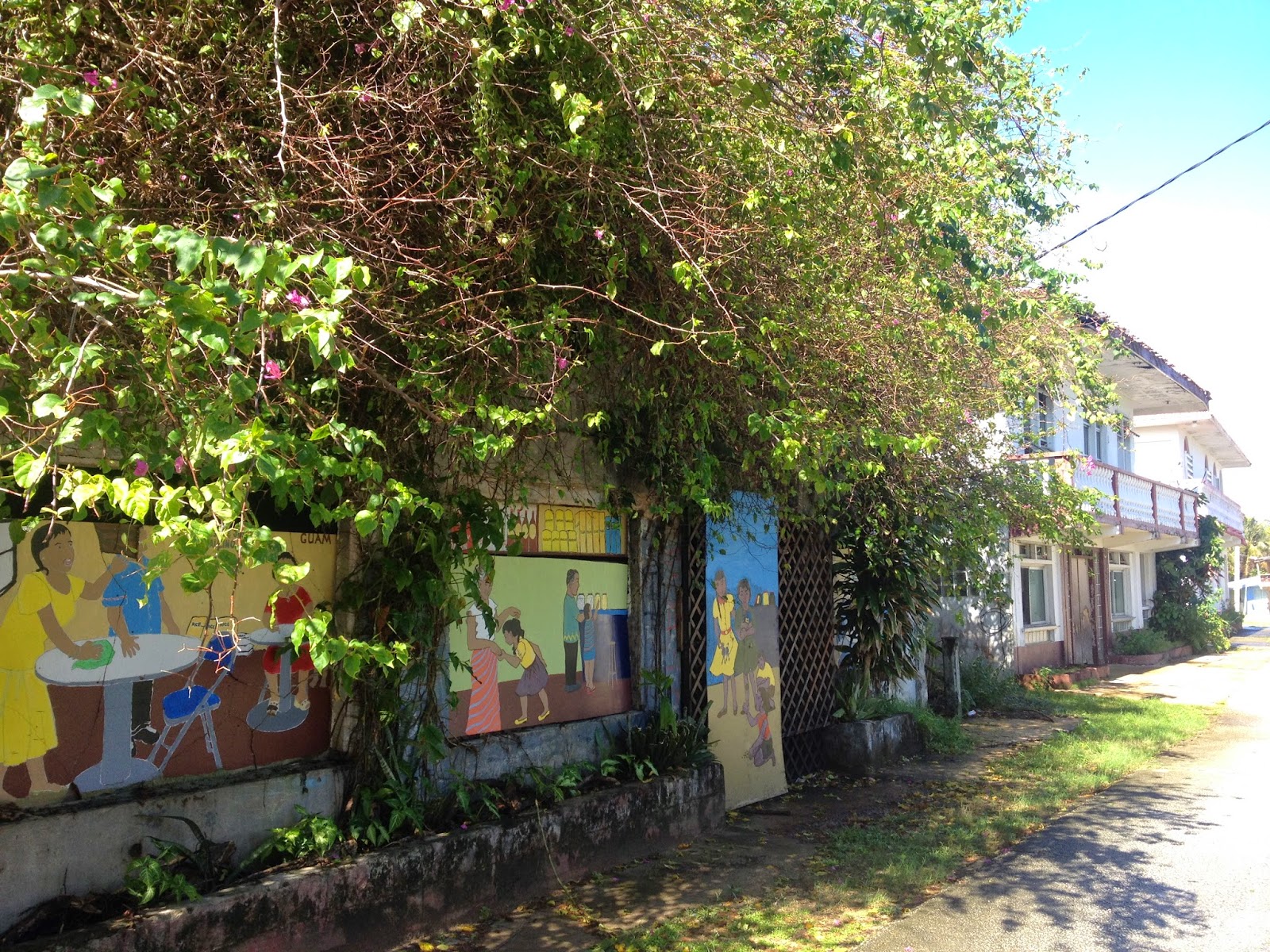 |
| Photo by Rueben Olivas |
When their family traveled from Colorado to Guam, their adventure began with a train ride to San Francisco. Then, 32 hours of flying, island hopping at Hawaii and Wake islands. The children slept on the floor of the plane, the adults suffered in their seats. At the start of the trip they loved brownies. By the end, brownies were hated among all!
Their first place to call home was a quonset hut provided by the government. This quonset hut community was not much different from the states; families like theirs, Americans, wearing the latest fashions, all speaking English. Most of them appreciated the beauty of the island, but did not initiate involvement with the Chamorro community that bordered theirs along the top of the hill.
During one family walk around the neighborhood, the Selks approached a Chamorro family sitting on the porch of their little wooden house to ask about the breadfruit tree in the yard. They were very friendly, but shy; the father of the family being the only one to actually speak. (Did you catch that, kids?! My grandfather took his family out on neighborhood walks, too!)
Charles was given the assignment to teach at Inarajan High. A second grade teacher was also needed, so the principal asked Bonnie if she was interested. At the time, she had only one year of business school, so she told the principal that she was interested, but that she had no credentials. His reply was,"Anybody can teach second grade!" So, my grandma taught during the day and went to evening classes at the College of Guam. It took many years, but she eventually gained a masters degree in counseling.
Their Chamorro sponsor family, the Cruz's, escorted them on their first visit to the tiny village. When they turned in at the end of San Jose Street in Inarajan, it was a whole new world to Judy's young eyes. The tiny town was full of life. Children filled the streets; the older ones playing stick ball, the younger ones chasing around in their home-made undies. Elders sitting out on porches. Native islanders going about their busy domesticity.
 |
| The Diego house. |
Joey Diego was a few years younger than my mom, but he became my nino, or godfather. After the Selks moved out, Joey and his family moved in upstairs. He and his wife still live there and his knees are beginning to regret the move!
The Cruz family turned out to be their across-the-street neighbors. Mr. Cruz was Judy's 6th grade teacher. Judy was eleven at the time, and she remembers how friendly everyone was; always inviting them to play, to family functions, or to parties.
 |
| I made this box for my grandma after my mom died. |
Folks would pass by and Phyllis would practice her Chamorro words on them. She would sit there and sing songs to herself. She learned the language very naturally just growing up among Chamorro people.
When it was time for dinner, Charles would come out on the balcony and call out very loudly each of his children's names. "Aaalberrrrt!" "Meeeady!" Even down at the basketballs courts, everyone would hear, and friends would yell, "Aaaalberrrt!" This embarrassed Judy so much that she learned to stay near so he wouldn't call out her name.
 |
| This is where prom dates posed before the dance. Ha. |
Boys and girls weren't allowed to spend time together until they were of marrying age. But, girls were always sent down to the stores by their parents to shop.
So, the boys would buy sodas and sit at the tables just so they could see the girls, and maybe even talk to them?
Mr. Diego, the Selk's landlord, was assigned by the governor to be the village commissioner. Judy said he was the best commissioner the village ever had. He looked out for people. He knew all the families.
When the mackerel were running he could be heard yelling from the bay for everyone who had a net to get down there. The whole town could hear it and everyone would go.
The nets would be joined together and stretched out across the bay using boats. The boats would then move towards the shore with the nets to bring the fish in. Everyone that was able would help to bring the mackerel up onto the land. Huge mounds of fish were piled up, right there on the beach. Mr. Diego took great care in dividing the fish.
First, would be the owners of the boats. Then, the men who owned the nets followed by those who swam out to drag the nets towards the shore. Next to receive fish were those who helped to pull the nets up onto the beach. Finally, some would be taken to the aged and the sickly, and there was always some left for bystanders.
The whole village smelled of fish, and had to be preserved in the old fashioned ways, with salt!
 |
| Photo by Rueben Olivas |
This house was owned by an American who married a Chamorro lady. There was a metal quonset hut right next door, and this couple ran a movie theater in there. Judy remembers the first time she went. Entering that metal building in the tropical heat, she looked up at the screen and there was a horror film playing. She was terrified as she watched a woman in a bathtub being watched by a giant cyclops through the window. As the woman screamed, Judy ran out screaming and never returned. Okay, I made up that last sentence, but it really did frighten her, and she really didn't want to go back for a while.
As life on the island changed from farming to industrial, people began to take work up on the north half of the island. People started moving away. Buildings were kept in the family but left to rot. Which, in a hot, humid climate doesn't take all that long.
The entire town has been registered as a historic landmark, the buildings being designated as either pre-war or post-war.
This building shows the traditional way the Chomorro people built their houses. They had wooden posts coming up out of the ground, and would hang the floor above the ground. When the Spanish arrived, cement was introduced, so they would build a wall around the crawl space under the edge of the floor, and then, they started adding cement steps.
There were no nails in the original structures. They used mortise and tenon, and rabbit grooves.
 |
| Photo by Rueben Olivas |
This house was built around 1915. It's believed to be the oldest one in the village. During WWII, the porch was actually bombed, which is kind of funny because the guy who bought the house and is fixing it up used to be in charge of "explosive ordnance disposal" in his unit in the military. I did not previously know that ordnance was a word, did you?
Judy and Johnny used to rent this house when Sandy was a baby. The owner at that time had a huge sleigh bed in the bedroom on which Judy refused to sleep, for some reason, so she set up a bed on the porch. They would all three sleep on the porch.
Judy would leave to run errands with Sandy while Johnny was off to work, and when she returned her bed would be mussed up and have sticks and grass in it. She would get so flustered wondering what in the world was going on. She finally figured out that some dog would come sleep in the bed while she was gone. So, she put a gate at the end of the porch. Judy shared this story as we stood with the current owner in his living room. He then took us to the bedroom where he pulled plastic sheeting off of the very same sleigh bed! They had found the foot and head boards down in the bodega (basement) and he refinished it.
This photo shows the living room; original lathe ceiling and paneled walls. See the two unpainted spots on the ceiling? Those are large bullet holes from aircraft fighters.
This is the door to the bodega. I thought they meant it was like a real basement, but it's more of a crawl space, tall enough to stand under.
During harvest time, the women would shuck corn down in this bodega because it was cooler and there were holes at the opposite end which would allow a breeze to blow through.
This is one of the holes. People would approach from the outside and actually purchase corn through this hole. Sadly, there are not many people on the island who grow food anymore.
Well, that is a little bit of my family's history. I'm considered a half-cast here. At first, people treat me like I'm white. It's not bad, it's more... business-like. Then, when they find out I'm Chamorro, they treat me very differently. They ask me about my background and open up to me.
I'm so glad that I've had the opportunity to become somewhat acquainted with the place where my mom grew up. I understand that today's Guam is very different from back then, just as Jake's Star Valley is very different from today's.
I've also learned a bit more about my mom. I was 21 when she passed away, and I had been living away from home since the age of 16, so I never got to know my mom as a person. I've learned that she was quiet, yet adventurous. She did not share much about herself but was a very good friend. It's been nice spending time with other family members, as well. You guys are SO great!
So, now I'll let everyone know that our adventure here is coming to an end. We are moving back to the states for many, many reasons. We are not sorry we came. We love the island and the people. Jake and I actually would love to come back when our children are grown and when Guam has a temple, which many of us are earnestly hoping for. I'm sure I'll still have a few more things to write about, like our visit to the zoo!
David, I'm sorry I won't make it to the fiesta! Take pictures!
YA'LL coMe bAcK nOW, yA hEar?















Tiana I learned so much about the Selks and your mothers life. You really did excellent with this report. good luck in the Main land
ReplyDeleteThanks, Dad!
DeleteThis was a wonderful, history-filled story. It felt as if you were speaking to me through your written words. I was reminiscing my own youthful adventures in Inarajan as you were recalling yours and your family's. Those were such great simple times. The people of Inarajan unequivocally loved the Selks. Still do! Thank you for sharing.
ReplyDeleteJulie Duenas Manglona (Taotao Belen)
Julie, Thank you so much! Feel free to share any memories here in the comments section! Many of us would enjoy that.
DeleteW/a Smile, Tiana
after thought. the village looks ... depressed, nothing like when I was there in the late 70's. have people moved out of the old and created a newer Inarahan?
ReplyDeleteToo bad your leaving. I was looking forward to seeing you and the kids on my next swing through.
ReplyDeleteHi,
ReplyDeleteWe were neighbors of the Selks. My dad was the principal and my brother was Albert's friend.
Sue